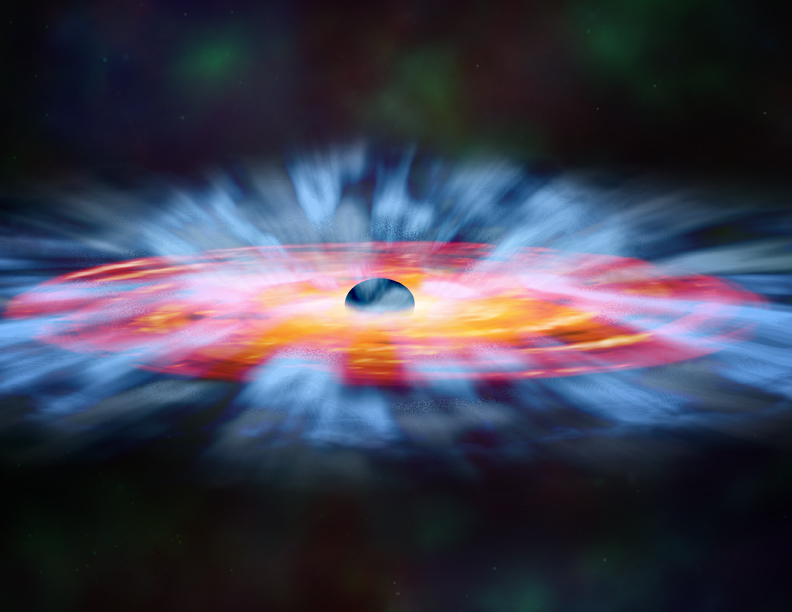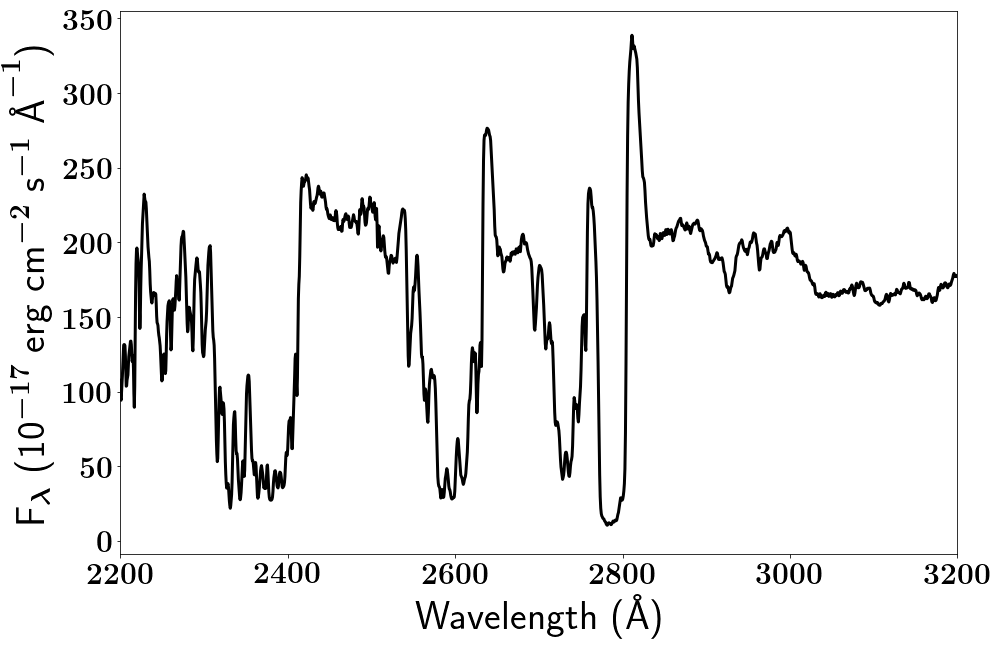Evolutionary Feedback Between a Galaxy and its Supermassive Black Hole

Image credit: ESO/M. Kornmesser
Most, if not all, massive galaxies host a supermassive black hole at their centers. An active galaxy describes a galaxy in which the central black hole is accreting matter from the surrounding area, in turn powering luminous radiation that can outshine the entire galaxy. Active galactic nuclei (AGN) emit so much radiation that despite how far away they are, they are bright enough to have been historically mistaken for stars, hence their more common name, quasar, which originates from "quasi-stellar object".

The compact nucleus itself is only about a third of a light year in diameter, yet the host galaxies can be on the order of 100,000 light years across. However, there is strong observational evidence that there exists a correlation between the evolution of the black hole and its host galaxy; the larger the black hole, the larger the galaxy. This suggests that there must be a feedback mechanism between the nucleus and the host galaxy, dictating the periods of intense star formation that allow the galaxy to grow.

One potential mechanism to power this feedback is quasar wind outflow, illustrated in Figure 1. High-velocity outflows of gas come off of the central engine at roughly a tenth the speed of light. Spectral observations trace the presence of these outflows through broad absorption lines, shown in Figure 2. The relationship between wind outflows and star formation has been explored through investigating how the star formation contribution in spectral energy distributions compares to the broad absorption line structure in quasar spectra. If there is a correlation between the two observables, whether a direct or inverse correlation, we could begin to infer that winds do contribute to AGN evolutionary feedback.